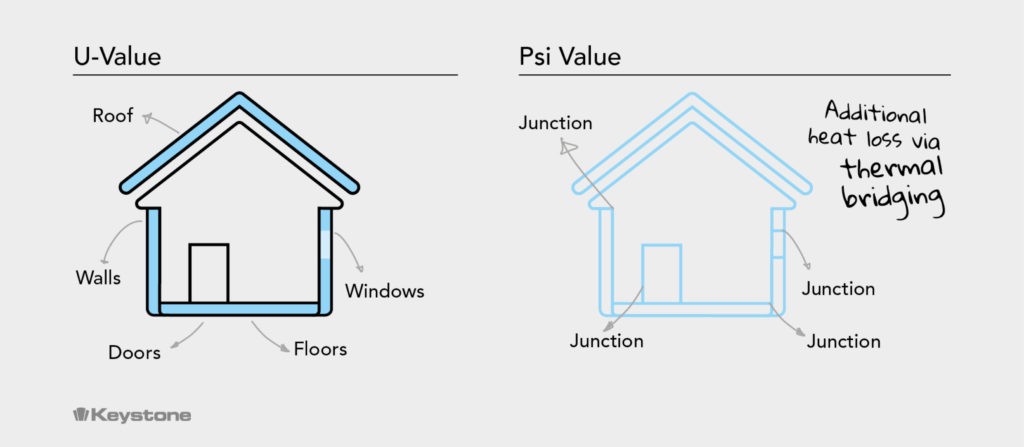More energy-efficient houses are high on the UK’s agenda, particularly when considering energy use in homes accounts for around 14% of total UK emissions. With the Committee on Climate change report ‘UK housing: Fit for the future?’ highlighting that energy use in homes is increasing, and also with proposed changes to Part L Building Regulations on the horizon, how will a fabric first approach make our homes more sustainable?
A fabric first approach is essential if homes and buildings in the UK are to become more energy efficient and sustainable, and off-set some of the increasing energy costs and climate change conditions. Championed by reputable industry professionals across the UK, this approach to energy efficiency aims to maximise the performance of materials and components that make up the building envelope in the first instance.
Fabric first factors in a number of aspects such as high levels of thermal insulation, excellent air tightness levels and a design that maximises elements such as building orientation making the most of solar gains from the sun.
It also means designing out thermal bridging in buildings as much as possible. If thermal bridging is not addressed there is a risk of:
• Poor energy efficiency
• Condensation & mould growth over time
• increased costs on other materials or technologies to compensate for this heat loss
It’s in the detail
 When creating an energy-efficient home, typically there will be an insulation layer within the cavity wall which helps prevent heat loss. However, when this insulation layer is interrupted by materials with a higher conductivity, such as where a traditional steel lintel spans a window or door opening, a clear path for heat to escape is provided and the thermal efficiency is compromised. Junctions such as these create localised cold spots, or weak points, in the insulation layer, otherwise known as a thermal bridges.
When creating an energy-efficient home, typically there will be an insulation layer within the cavity wall which helps prevent heat loss. However, when this insulation layer is interrupted by materials with a higher conductivity, such as where a traditional steel lintel spans a window or door opening, a clear path for heat to escape is provided and the thermal efficiency is compromised. Junctions such as these create localised cold spots, or weak points, in the insulation layer, otherwise known as a thermal bridges.
In fact research undertaken by the BRE has found that thermal bridging can account for up to 30% of heat loss from buildings. Good specification of thermally-efficient materials and products in the design stage, will eliminate the risk of thermal bridging and help improve a buildings fabric efficiency.
Traditional steel lintels can create a significant thermal bridge in homes due to the high thermal conductivity of steel and because they span over long lengths in a typical build. However, a lintel design which incorporates a thermal break will outperform and offer a much more efficient solution than a traditional steel lintel.
For instance, Hi-therm+ lintels use a patented combination of a polymer isolater and galvanised steel. The polymer section provides a powerful thermal break in the lintel and significantly reduces its conductivity value, with a Psi value of between 0.03 & 0.06 W/m.k. As a result Hi-therm+ Lintels are up to five times more thermally efficient and are also available in the same lengths, sizes and loading capacities as the standard range of lintels.
Adopting a fabric first approach from the initial design stage will ensure a home continues to perform energy-efficiently throughout its lifecycle. It is however, always in the detail. If an issue such as thermal bridging is not considered from the design stage, then the overall thermal efficiency of the building will be compromised. It is therefore incredibly important to specify materials & components which deliver where others cannot – as this can be the difference between a sustainable and an inefficient home.


Recent Comments